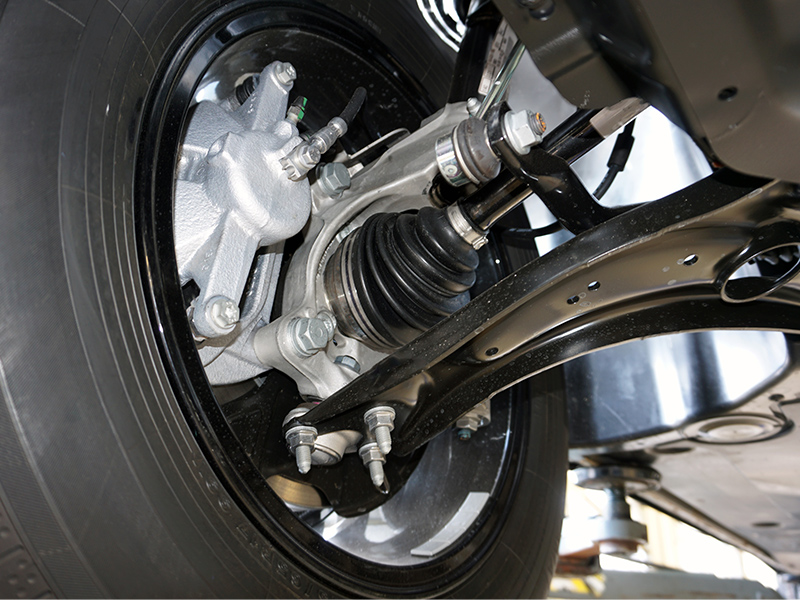The 3 Series is one of the most popular and most sold BMW models. The engineering for the 3 series is top of the line, and the final product offers a smooth ride. However, no matter how well crafted a vehicle might be, it is still susceptible to maintenance problems. With the BMW 3 Series, one of the more common problems is ball joint failure.
The suspension in BMW models is a very attractive component, one which mimics everything you would get from a race car but with a more comfortable cabin. If the suspension on your vehicle is starting to show signs of malfunction, it might be because of a ball joint failure.
THE PURPOSE OF YOUR BALL JOINTS
Nearly all cars have ball joints in their suspension system, but these joints are not meant to last indefinitely. They can wear out based on driving habits and road conditions. Traversing unpaved roads, for example, is perfectly fine every so often, but exposing your car to such conditions regularly can damage the suspension.
The ball joints connect to the control arms to the other parts of your suspension. They keep your suspension pivoting in a smooth fashion when you turn. If things stop working properly, you might notice a few of these key signs.
SIGNS OF BALL JOINT FAILURE
The first sign of ball joint failure is a disconcerting noise from your suspension. Clunking sounds or the sound of loose parts is typical of this type of problem. You might be surprised how often professionals have to listen to drivers mimic the noises they hear in order to start their diagnosis.
The second sign is severe vibration or a clunky feeling (often to accompany that clunky sound). As your ball joints become worn, they move more inside the socket which results in heavy shaking or vibrating. This problem is often isolated to one side or the other, but even if it is a problem in just one side, most professionals will recommend you replace both. If you don’t, there could be extra strain placed on the joint that went unreplaced, which will very quickly cause it to wear out too. Replacing both at once can help you save on labor costs in the long run.
Finally, wheel misalignment is another sign. If you notice your wheels are not aligned, and your car does not maintain a steady and forward pace when you are driving forward on a flat road, you need to have the vehicle inspected. That said, wheel misalignment is something that could be caused by many issue. This is why, if this is a sign you notice, it is imperative to have a definitive diagnosis to rule out any other suspension issues.
If you do not have a thorough diagnosis at the start, you might fix the wheel alignment without fixing the ball joints, and then the issue will only continue to worsen. The ball joint failure will compound while the recently fixed wheel alignment will temporarily mask the real issue. In the end, worse damage could ensue and you might have to replace the entire system.
CALL OUR PROFESSIONALS
None of these issues are things that you can fix yourself. Rather than potentially damage the car even more, it is best to seek our professional help sooner rather than later. Diagnosing remains a critical step in vehicle repairs, and ball joint problems are not exempt. To that end, we will thoroughly inspect your suspension, after which we will diagnose the issue.
Our expert service technicians at Fast Lane European are trained to work with BMW 3 Series and other European models. Each team member brings years of experience working with these cars to the table, alongside other makes and models. If you think your BMW 3 Series may be experiencing ball joint failure, turn to our team. The faster you have your BMW diagnosed and repaired, the sooner you can get back on the road and drive like new.
We have a convenient San Jose, CA location where you can bring your BMW for help with a ball joint failure or regular maintenance issues. Whatever your auto needs, we are here to lend a helping hand. Let us use our professional equipment, tools, and skills to get the job done right the first time.
 Mon – Fri: 8:30 AM – 5:30 PM
Mon – Fri: 8:30 AM – 5:30 PM 3585 Stevens Creek Blvd, San Jose, CA 95117
3585 Stevens Creek Blvd, San Jose, CA 95117 (408) 985-2000
(408) 985-2000 (408) 985-1000
(408) 985-1000





 Make An Appointment
Make An Appointment